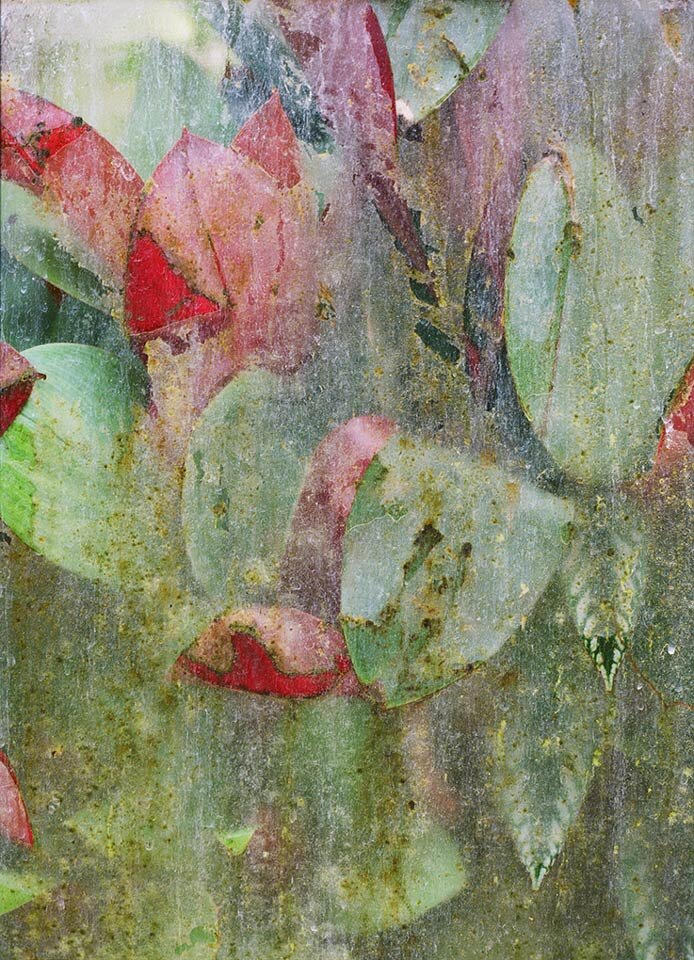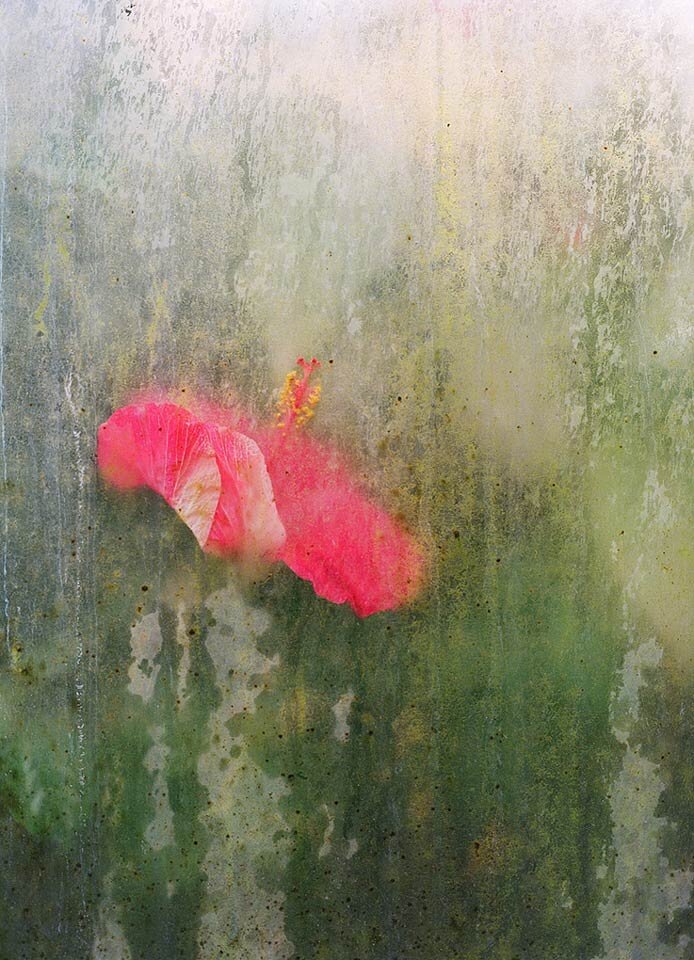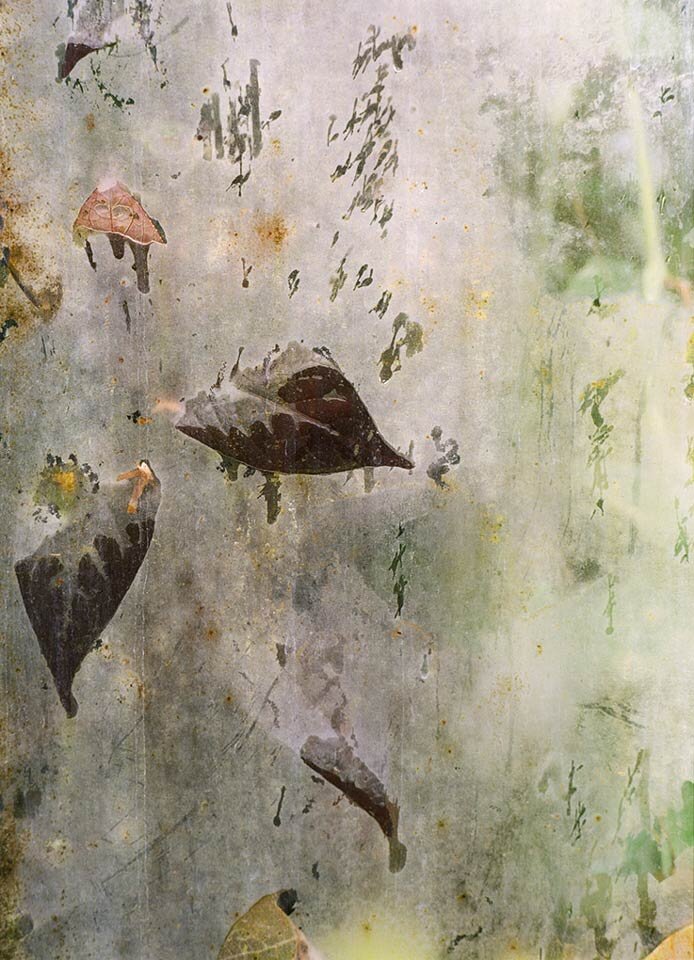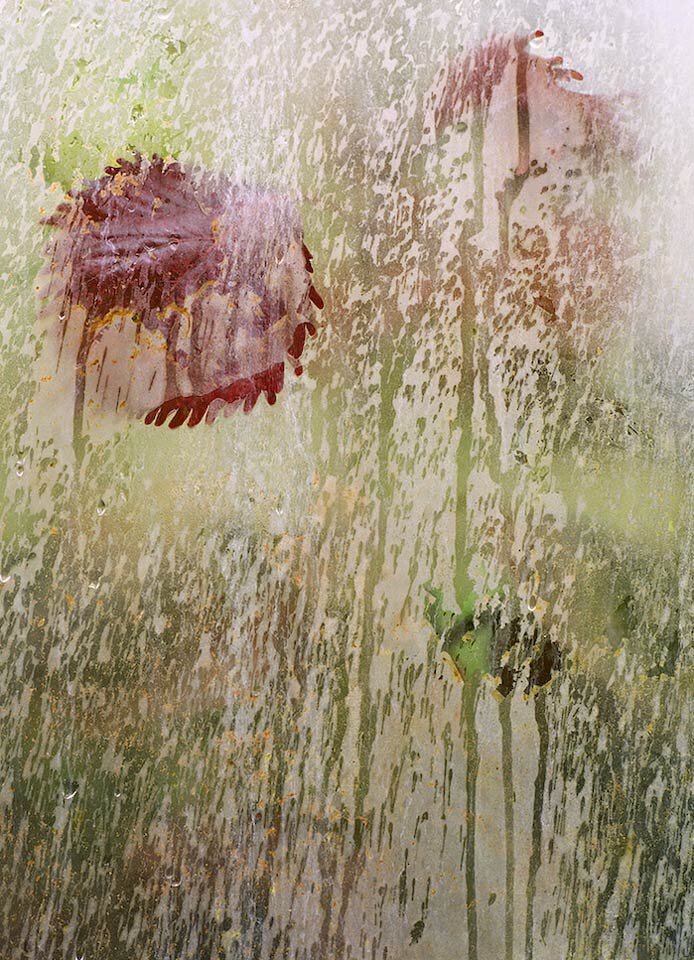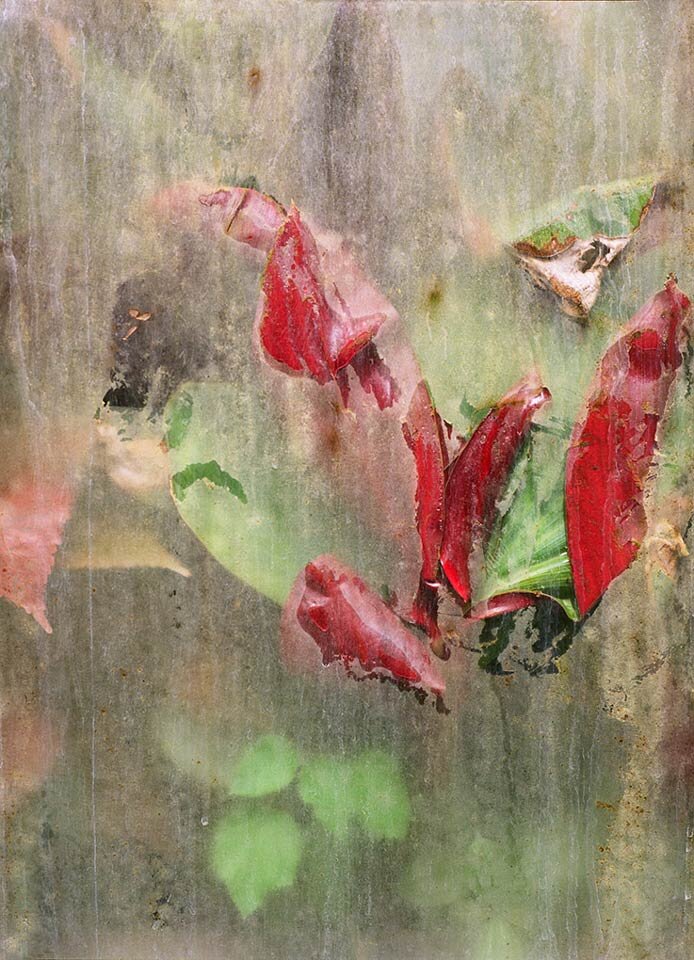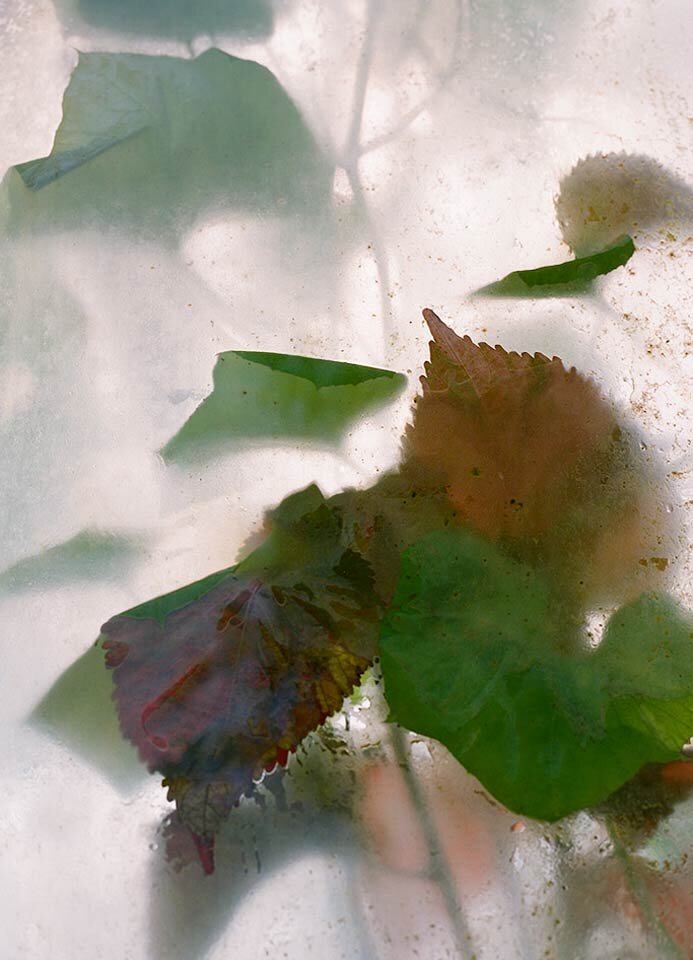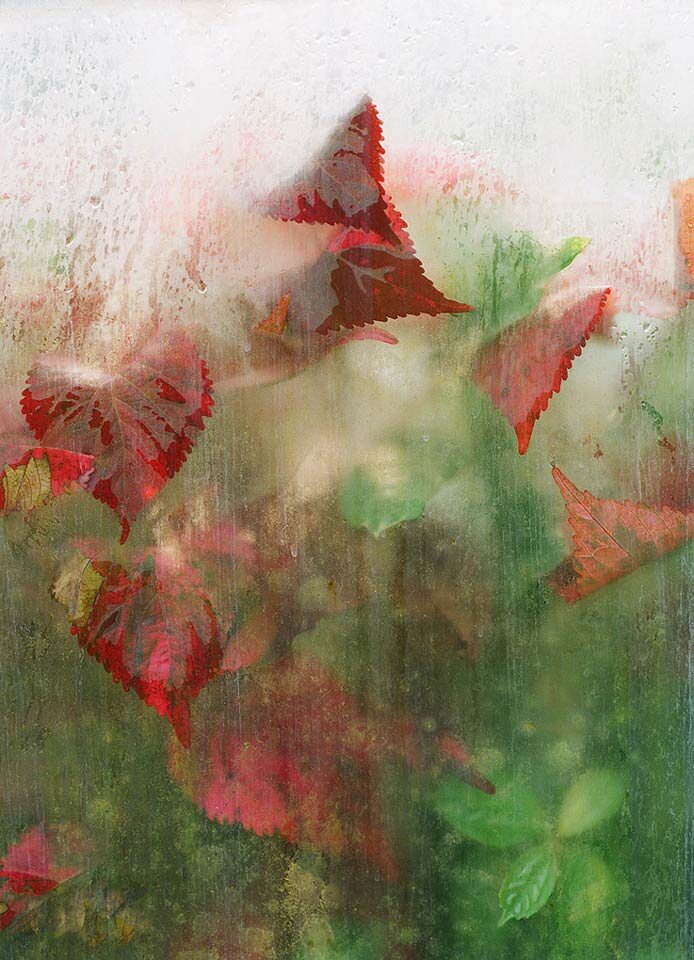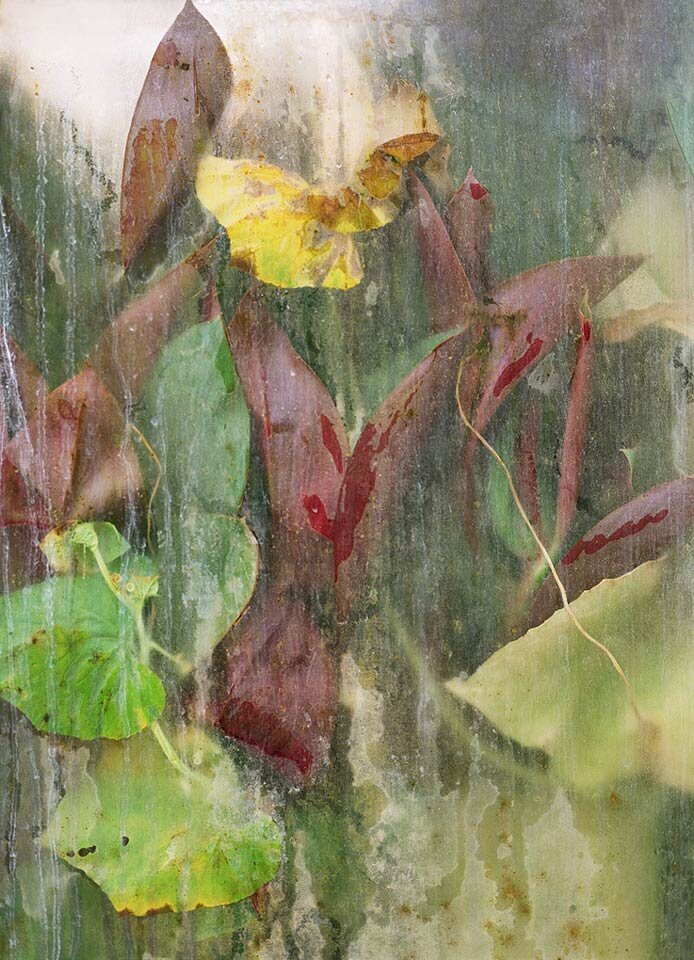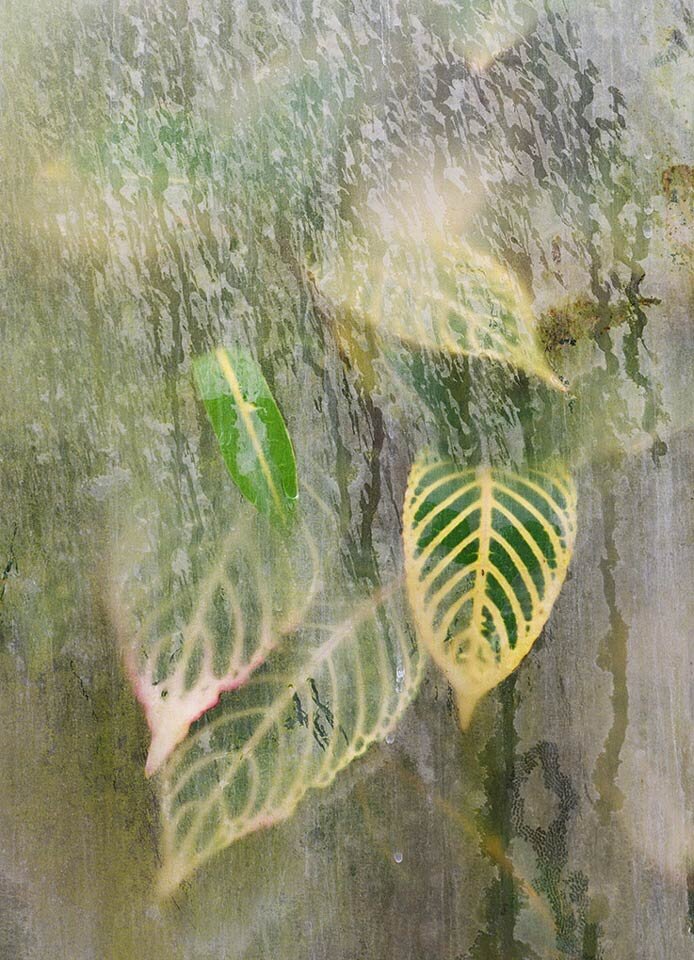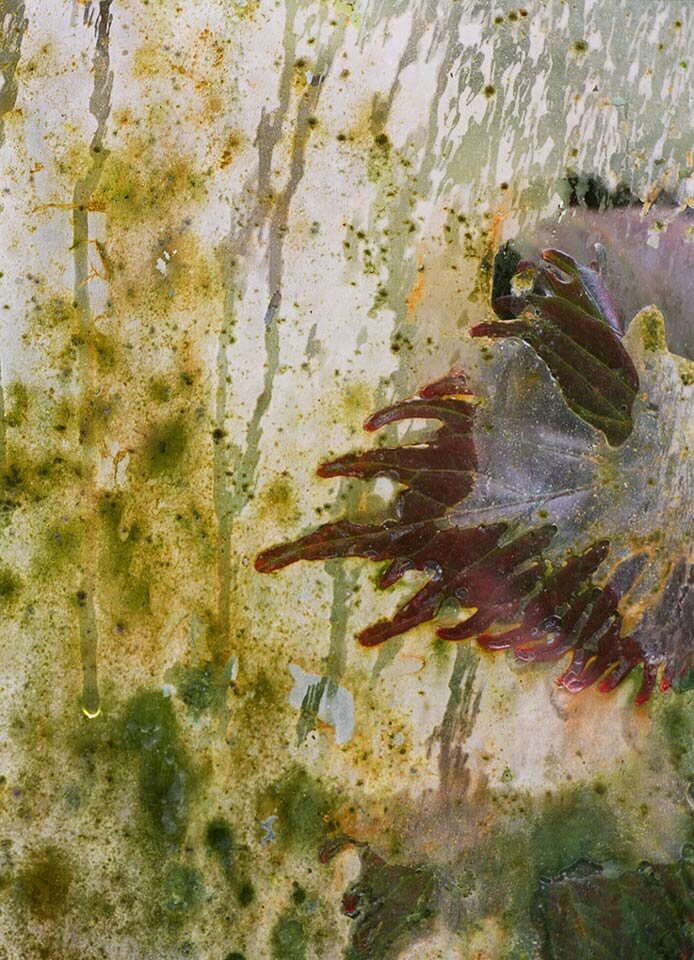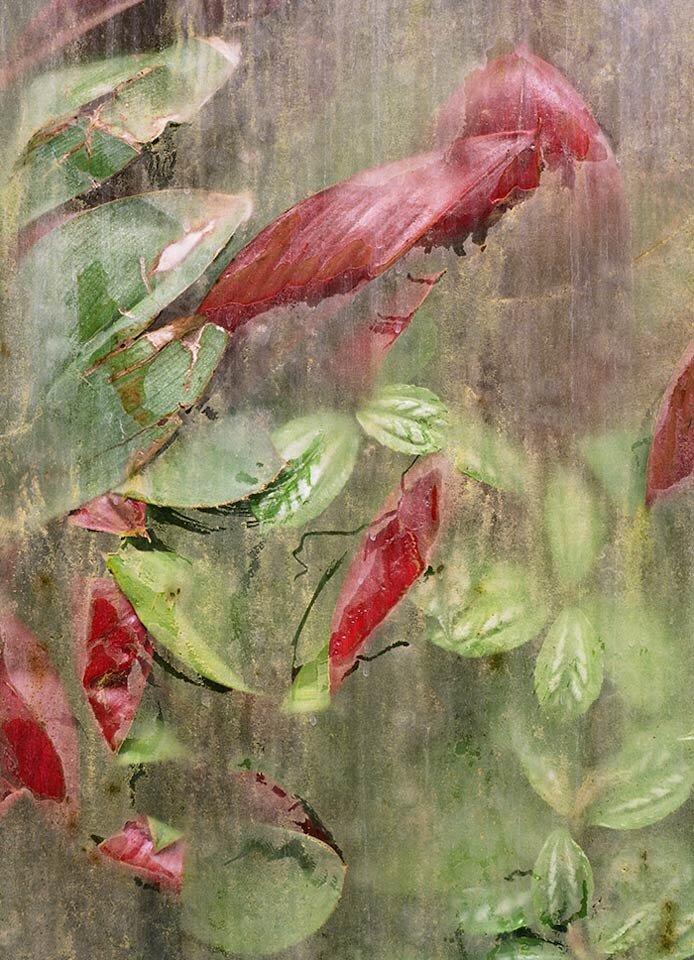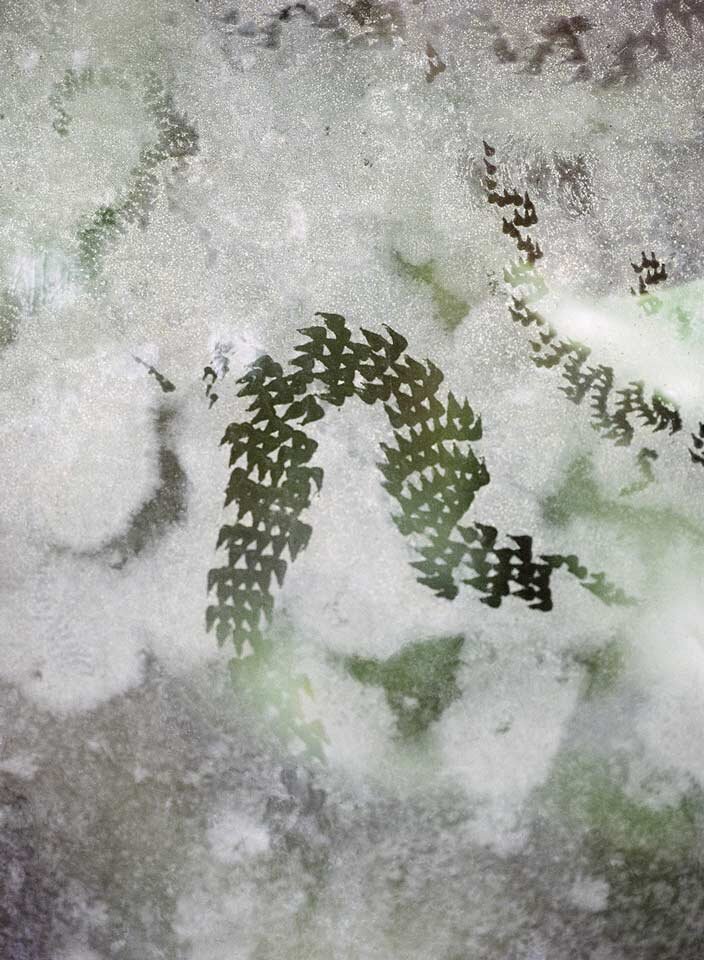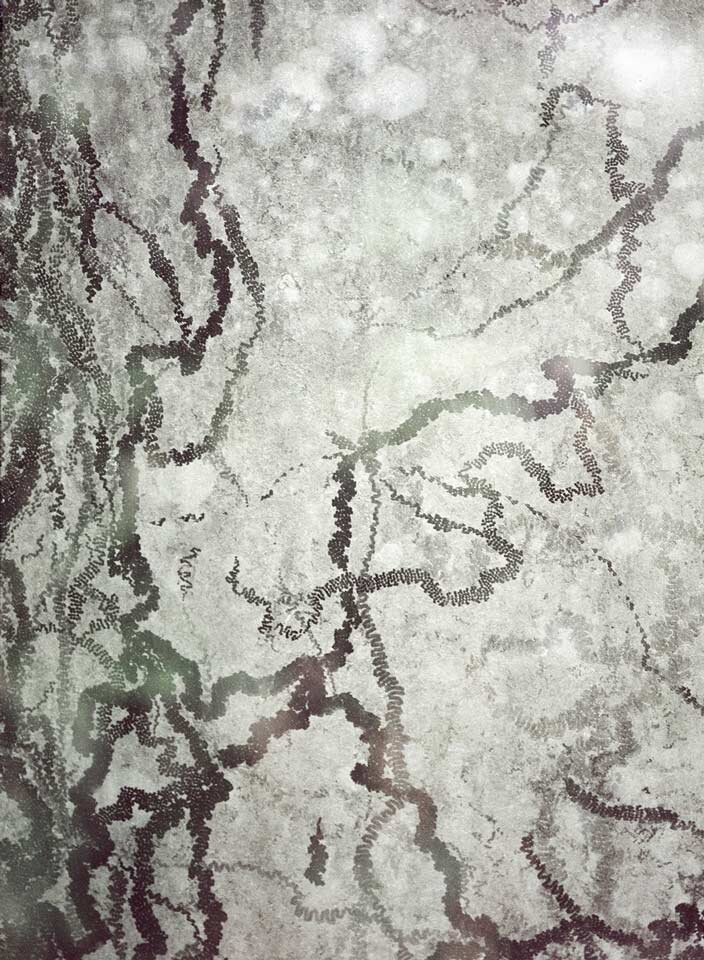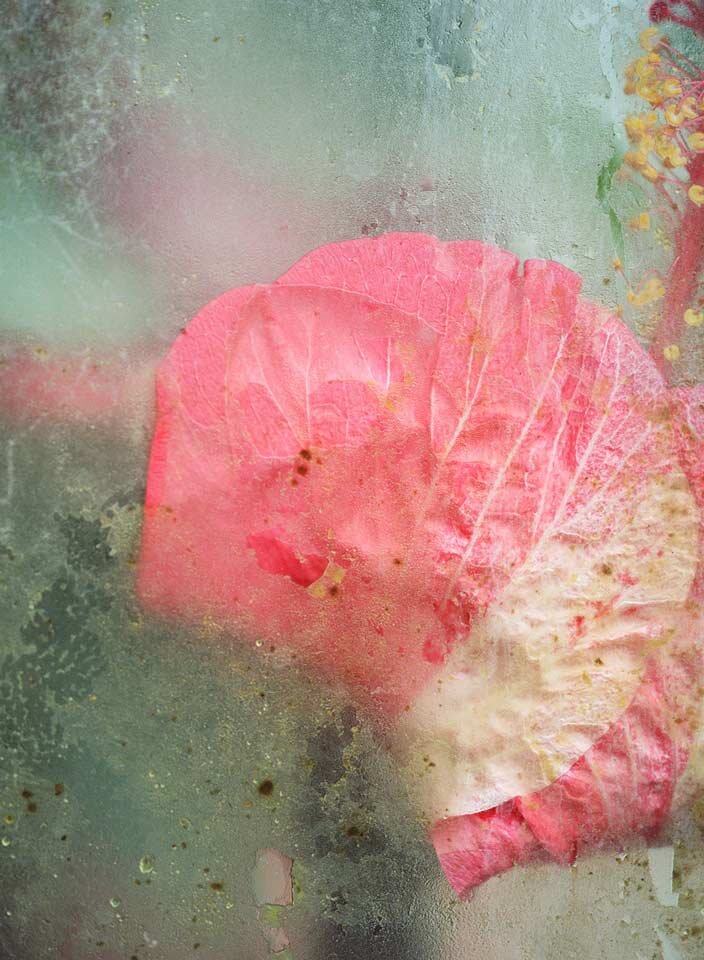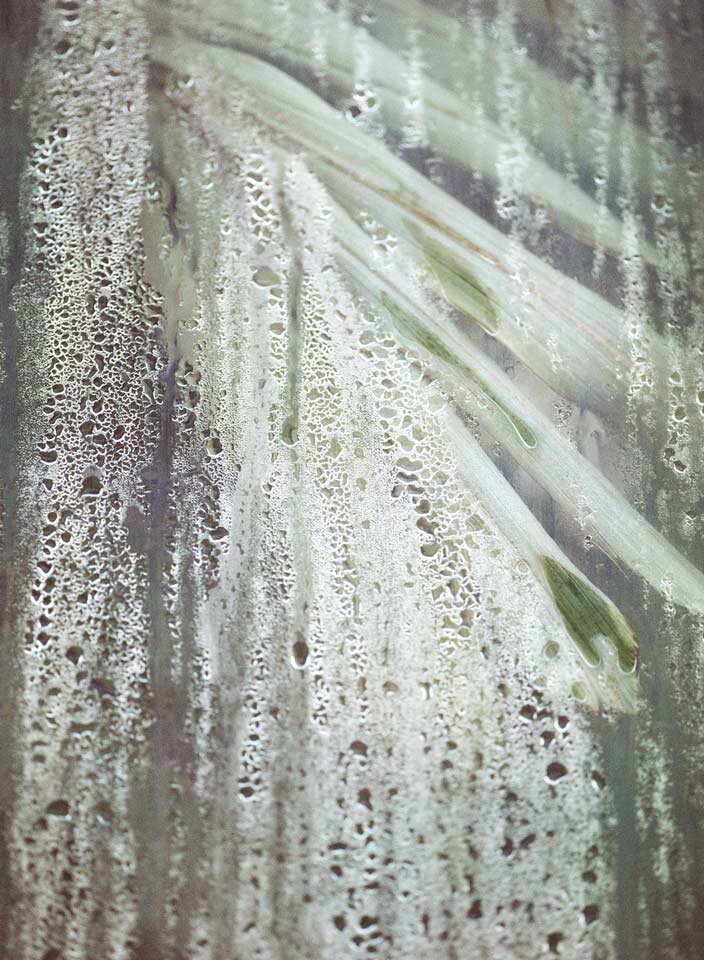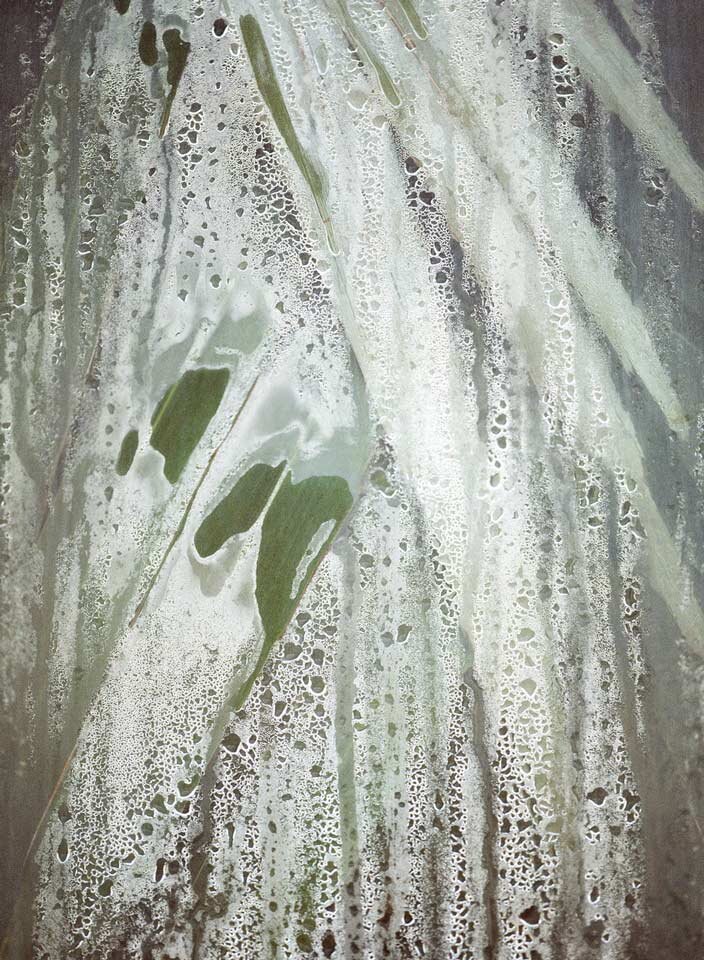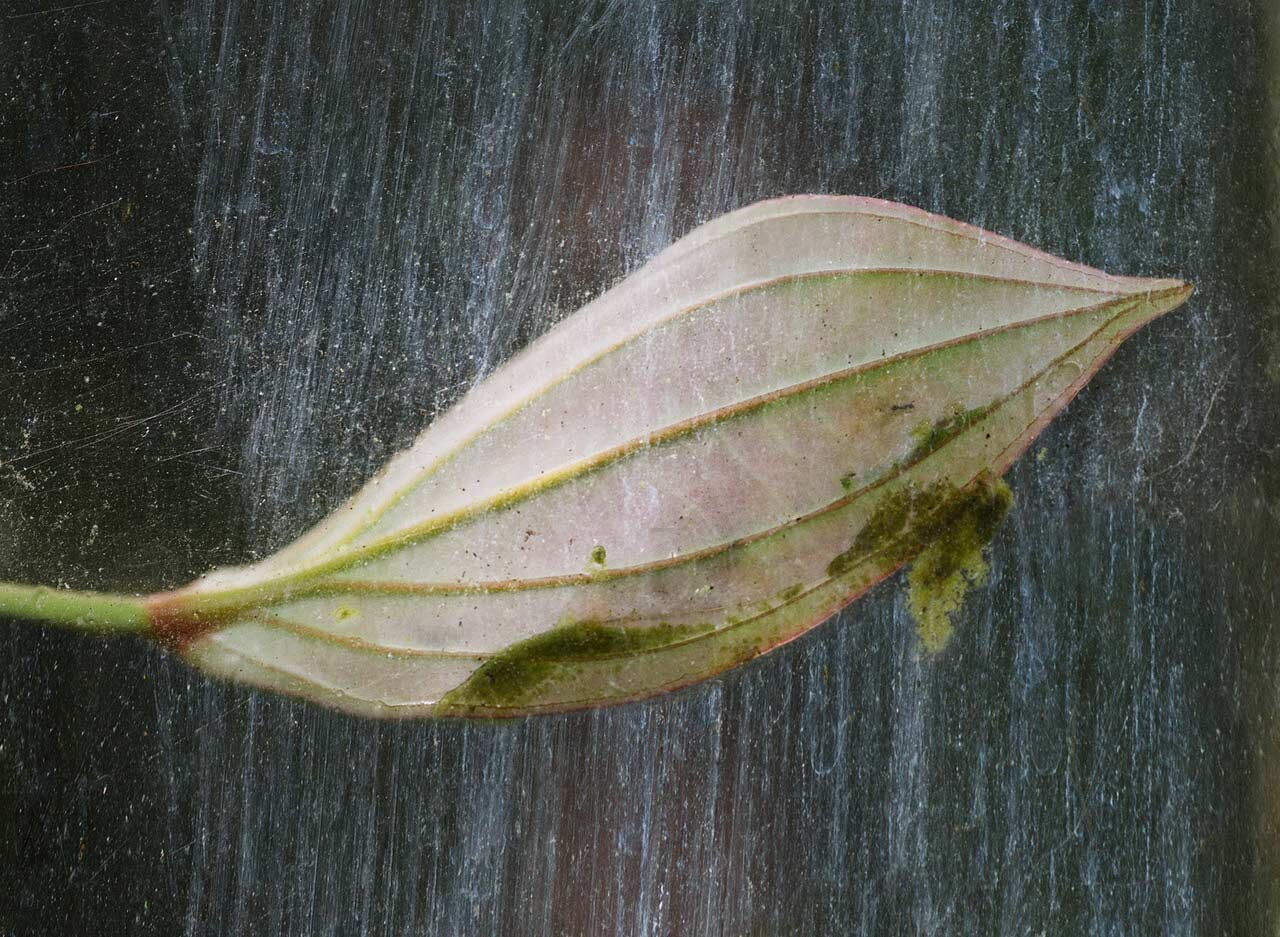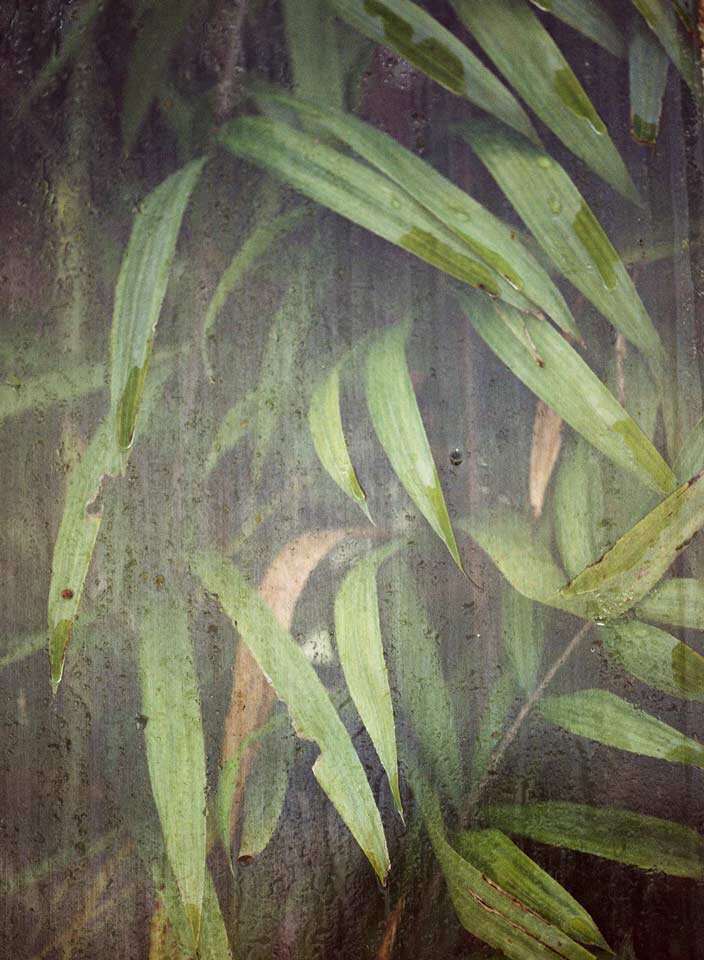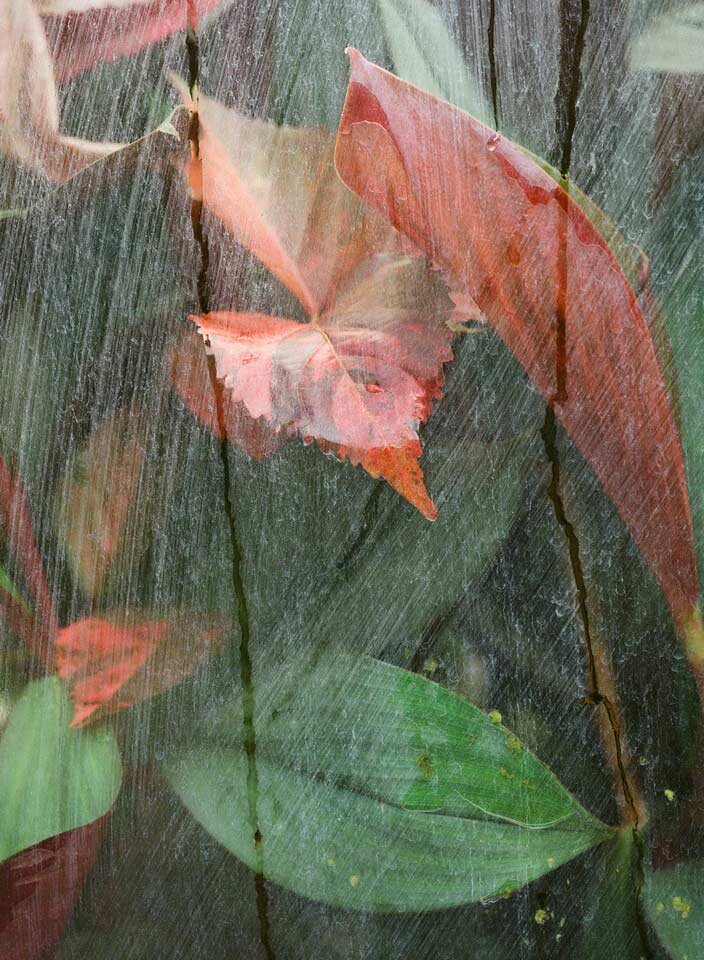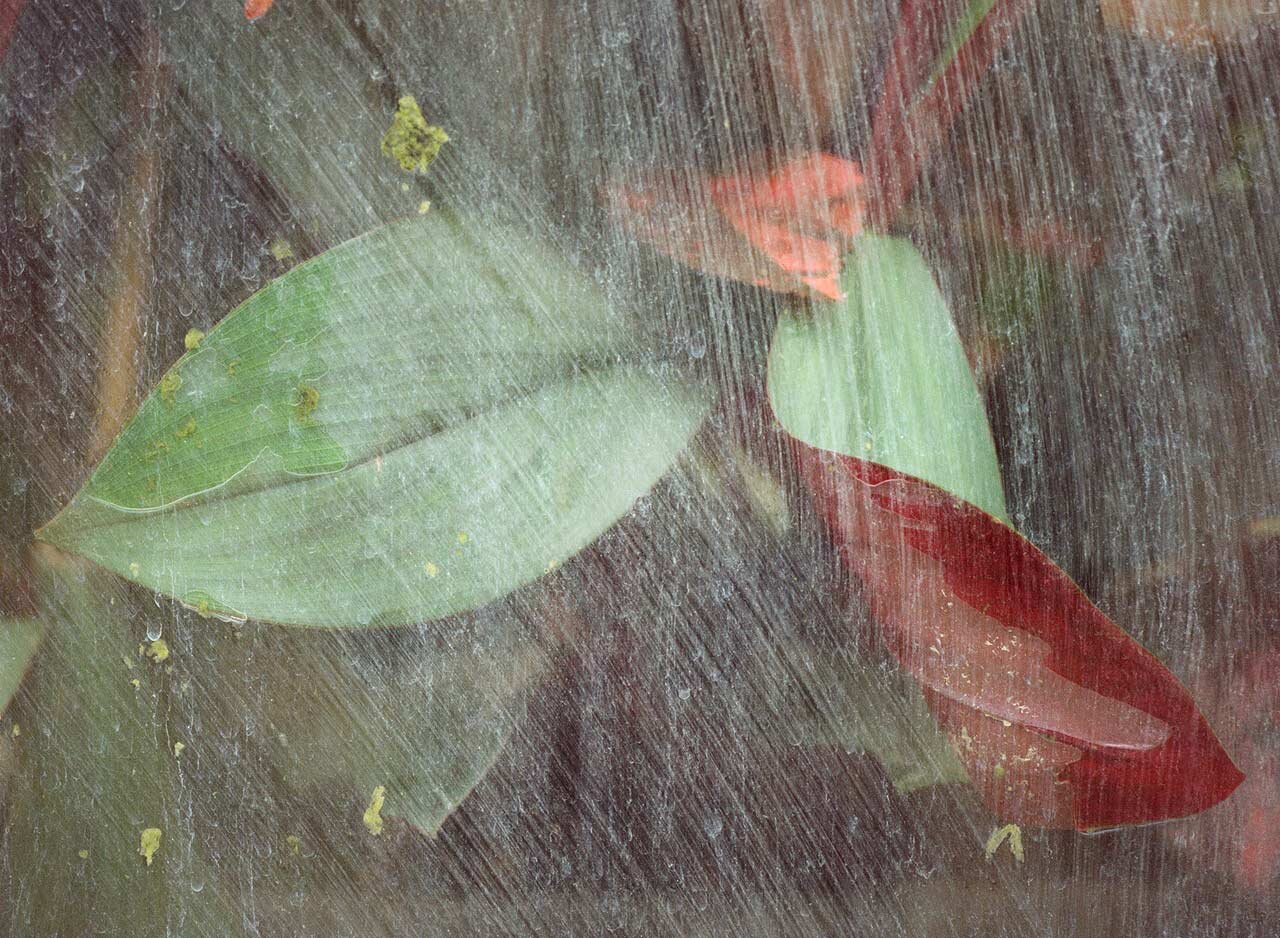TROPICAL SIGHTS
Tropical Sights is a series of abstract, impressionist photographs that explore the world of tropical plants living behind glass. Caroline has photographed a number of plants held in a greenhouse that both protects and imprisons them, depending on your point of view.
ⓘ Click on the large images above for details
by Roberto Mutti
It is 1844 when an ingenious English inventor, Henry Fox Talbot, takes a leaf, gently places it on a sensitised sheet of paper, covers it firmly with a glass sheet and exposes it to light, thus obtaining “its impression on paper”, which will then appear in his book “The Pencil of Nature”, the first-ever photography book. When observing it today, that leaf appears a little bit of a disappointment, as it slavishly traces the aesthetics of herbals: the cut leaf is not only dead, it appears so.
When a cultivated and creative photographer like Caroline Gavazzi decides to approach the plant world, it is inevitable that she will research a markedly personal route to expression. She does so by selecting as a privileged subject a number of plants held in a glasshouse that both protects and imprisons them. Before photographing them, she observes and studies them, but it is the colours and indefiniteness of shapes that suggests to her a vision of the world such as the one of the artistic movement she loves and favours: Impressionism. Moving away from realism is her choice. Caroline Gavazzi also confronts herself with glass, the one through which she photographs these plants: she plays with light, focuses on the droplets that run across the walls, creating unexpected colour effects. The dialogue between inside and outside is now more intimate, as it is the photographer herself who enhances the intensity of her feelings, the strength of the sensations she wishes to share with those observing her works. The plants are pervaded by intense vitality: you can notice it when they crowd towards visibility when one lays a leaf on the surface of the glass when a flower blooms silently removing itself with quiet modesty from direct sunlight. It is not, even though it would seem so, a fairy tale intuition – the most recent plant neurobiology research confirms how plants have an ability to “see”, chasing light, moving to seek it out; how they perceive sound through vibrations and recognise the signs of danger. Caroline Gavazzi has a direct dialogue with the past, the one of Fox Talbot and his leaf imprisoned in glass. She wonders, is this a barrier used as protection to enable those plants to survive better, is this a glass cabinet inside which the conditions of an eco-system with an artificially-monitored equilibrium is created, or is this the prison from within which the plants send out a desperate call to freedom? The question remains by choice open. With her delicate and poetic approach, Caroline Gavazzi captures the atmosphere of a mysterious world through which a vibrant vitality floats through, like a single sigh
English translation by Chiara Scassa

